
Nazarenes - romantic artists who challenged the conventions of classicism
The Nazarenes, officially known as the Brotherhood of St. Luke, were a union of German artists formed in the early 19th century who rejected the traditions of classicism in favor of romantic ideals. The paintings and frescoes of the Nazarenes predominantly depict biblical and historical subjects, created under the influence of masters from the Middle Ages and the Early Renaissance. The Brotherhood's creativity had a significant influence on subsequent representatives of Romanticism.
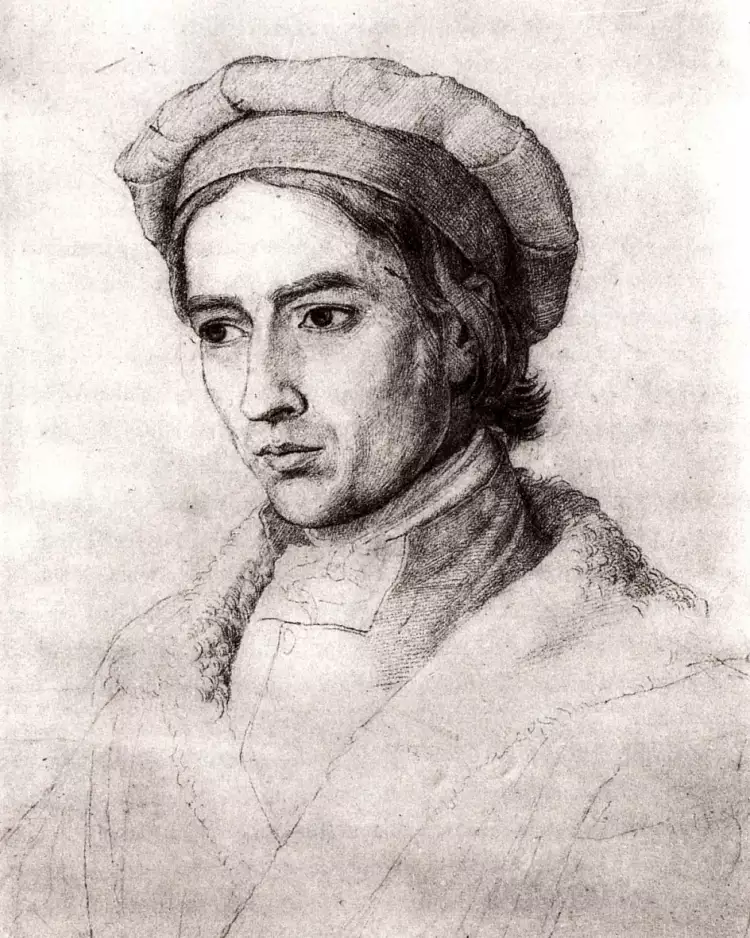 Nazarenes. Johann Friedrich Overbeck. Self-portrait, 1830
Nazarenes. Johann Friedrich Overbeck. Self-portrait, 1830
History of the Nazarene Union
The Nazarenes, like other educated Germans and Austrians of the early 19th century, were disillusioned with reality and contemplated societal renewal. They sought paths to revival in the glorious past, turning to the spiritual and cultural values of the Middle Ages. There were reasons for the decline in spirits: in 1806, Napoleon captured Prussia—the largest and last of the free German states. Moreover, students at the Imperial Academy of Arts were dissatisfied with the curriculum, which focused on technique but left no room for creative expression.
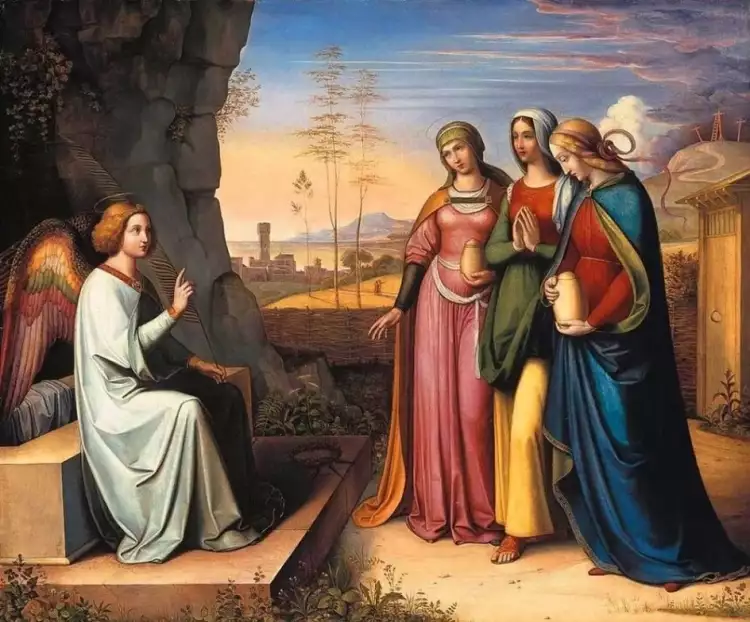 Nazarenes. Peter von Cornelius. The Three Marys at the Tomb, 1815
Nazarenes. Peter von Cornelius. The Three Marys at the Tomb, 1815
The Nazarenes officially united in the Brotherhood of St. Luke on July 10, 1809, pledging to dedicate themselves to the pursuit of truth and the fight against lifeless academicism. Before that, they regularly met to discuss art. Initially, two painters became friends: Johann Friedrich Overbeck and Franz Pforr. Soon, four more young artists from Germany, Austria, and Switzerland joined them:
- Josef Wintergerst (1783-1867).
- Johann Konrad Hottinger (1776-1851).
- Ludwig Vogel (1788-1879).
- Joseph Sutter (1781-1866).
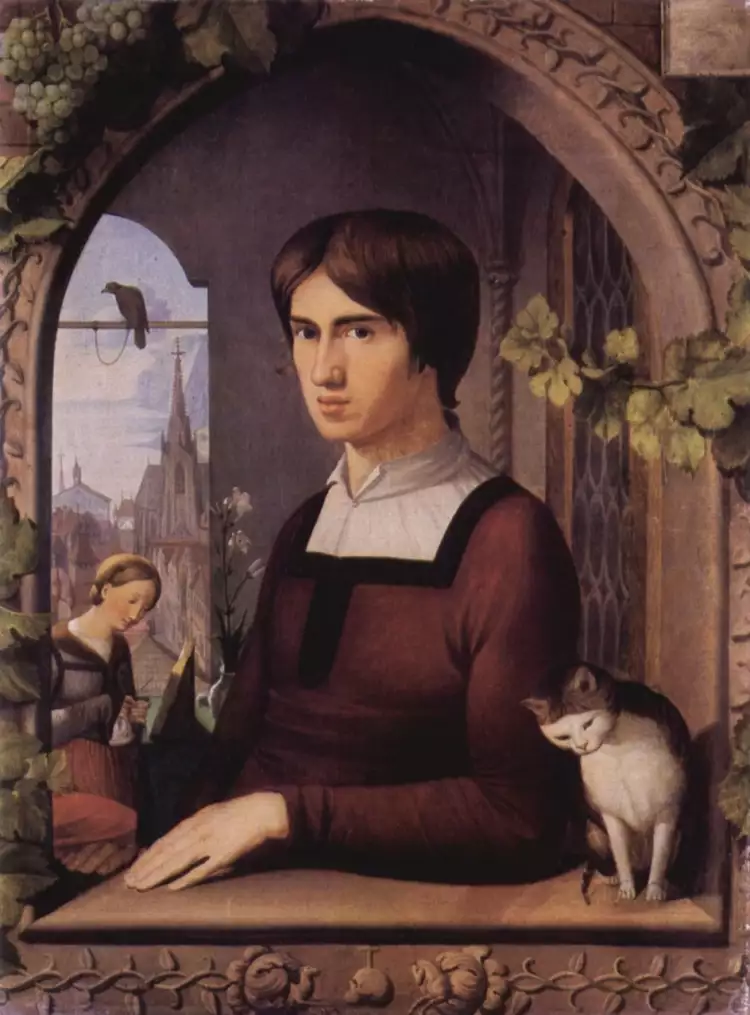 Nazarenes. Johann Friedrich Overbeck. Portrait of the Painter Franz Pforr, 1810
Nazarenes. Johann Friedrich Overbeck. Portrait of the Painter Franz Pforr, 1810
Their enthusiasm for new ideas clashed with the Academy's teachings, and Overbeck was expelled in 1810. The Nazarenes then moved to Rome, also occupied by Napoleonic forces. The artists found a disused monastery, San Isidoro, abandoned by the new authorities, where they adopted a hermit-like life. They slept in cells, managed communal affairs, discussed painting, and read Christian and philosophical books.
Considering Raphael, Albrecht Dürer, and other old masters as role models, members of the Brotherhood even copied their appearance. The artists became known as the "Nazarenes" due to their hairstyle with long hair and straight bangs. Gradually, new participants joined them, as many German painters traveled to Rome. Here are some of the most significant followers of the Brotherhood:
- Peter von Cornelius (1783-1867).
- Wilhelm von Schadow (1789-1862).
- Joseph Anton Koch (1768-1839).
- Schnorr von Carolsfeld (1794-1872).
- Philipp Veit (1793-1877).
- Karl Philipp Fohr (1795-1818).
- Franz Ludwig Catel (1778-1856).
%20%D0%9D%D0%B0%D0%B7%D0%B0%D1%80%D0%B5%D0%B9%D1%86%D1%8B.%20%D0%A8%D0%BD%D0%BE%D1%80%D1%80%20%D1%84%D0%BE%D0%BD%20%D0%9A%D0%B0%D1%80%D0%BE%D0%BB%D1%8C%D1%81%D1%84%D0%B5%D0%BB%D1%8C%D0%B4.%20%D0%9A%D0%B0%D1%80%D1%82%D0%B8%D0%BD%D0%B0%20%C2%AB%D0%91%D0%BB%D0%B0%D0%B3%D0%BE%D0%B2%D0%B5%D1%89%D0%B5%D0%BD%D0%B8%D0%B5%20%D0%9F%D1%80%D0%B5%D1%81%D0%B2%D1%8F%D1%82%D0%BE%D0%B9%20%D0%91%D0%BE%D0%B3%D0%BE%D1%80%D0%BE%D0%B4%D0%B8%D1%86%D0%B5%C2%BB%2C%201818.jpg)
The artists left the monastery after the death of Franz Pforr in 1812 but continued to live in Rome and remained true to their ideals. Gradually, they became known both in Italy and in their homeland, and success accompanied their fame. A significant event was the decoration of the house of Prussian consul Jakob Salomon Bartholdy, which the Nazarenes executed collaboratively. They revived the forgotten fresco painting traditions among German masters, taking Raphael's works as a model, as they considered monumental painting the highest form of art.
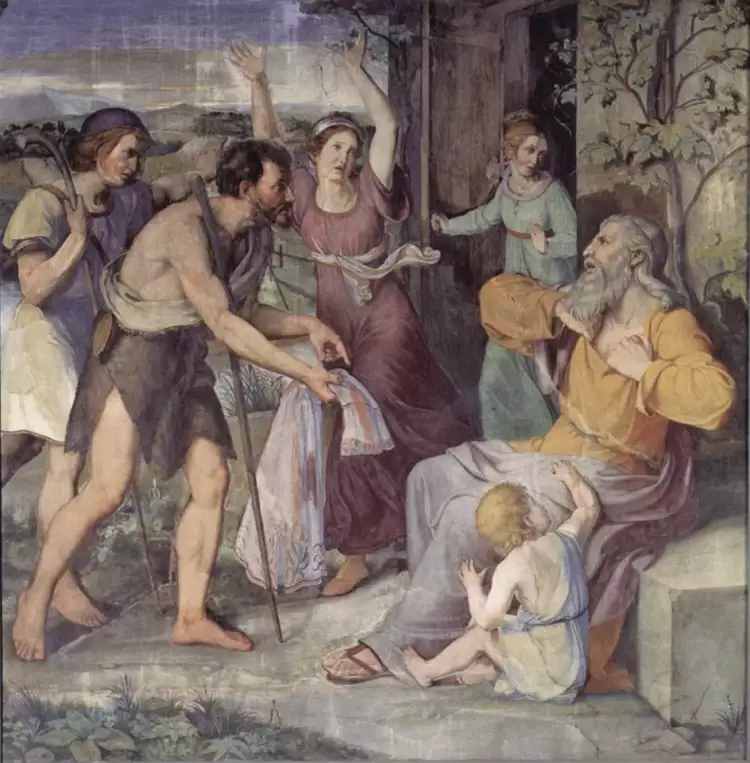 Nazarenes. Friedrich Wilhelm von Schadow. Jacob mourns for Joseph, 1816
Nazarenes. Friedrich Wilhelm von Schadow. Jacob mourns for Joseph, 1816
The fresco was completed in 1817, and a celebration was organized for the occasion, attended even by the Crown Prince, the future King Ludwig I of Bavaria. Later, he invited many Nazarenes to Munich and offered them prominent court positions. In the 1820s and 1830s, the Brotherhood of St. Luke began to disintegrate. Its members returned to their homeland and eventually joined the academicians. Only Overbeck rejected all lucrative offers and remained in Italy until the end of his life.
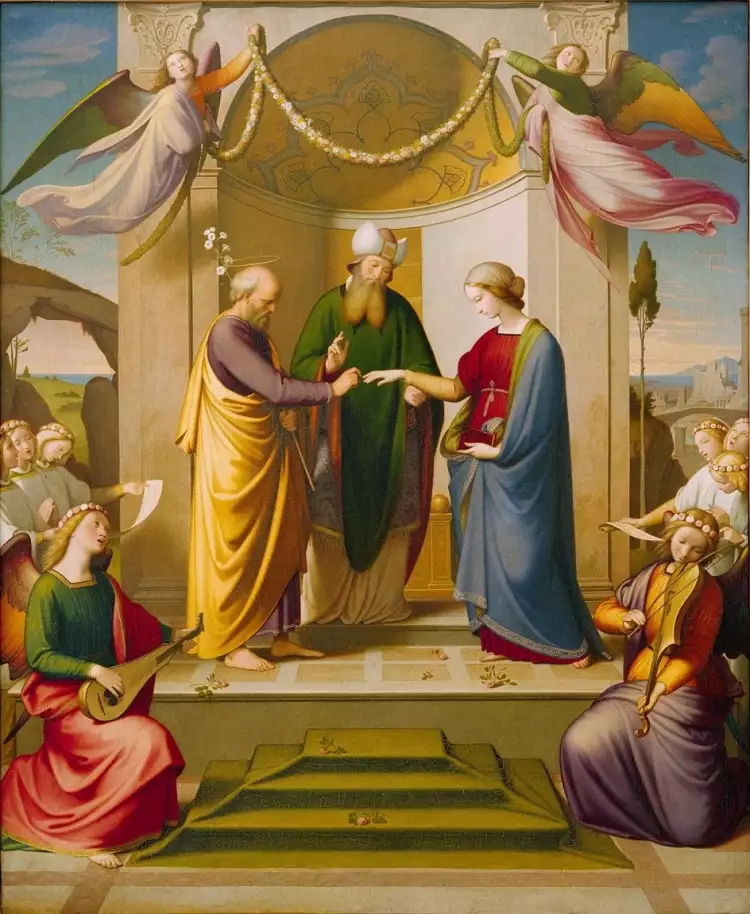 Nazarenes. Johann Friedrich Overbeck. Lo Sposalizio, 1836
Nazarenes. Johann Friedrich Overbeck. Lo Sposalizio, 1836
In the era of Impressionism, the Nazarene movement exhausted itself, gradually fading into obscurity. Serious study and rediscovery of their influence occurred in the second half of the 20th century. It is now undeniable that the Nazarenes had a significant impact on the neo-Romantics and Symbolists of the second half of the 19th century, including the Pre-Raphaelite movement in England, the Lyon School in France, and the early works of Alexander Ivanov (Russian: Александр Иванов) in Russia.
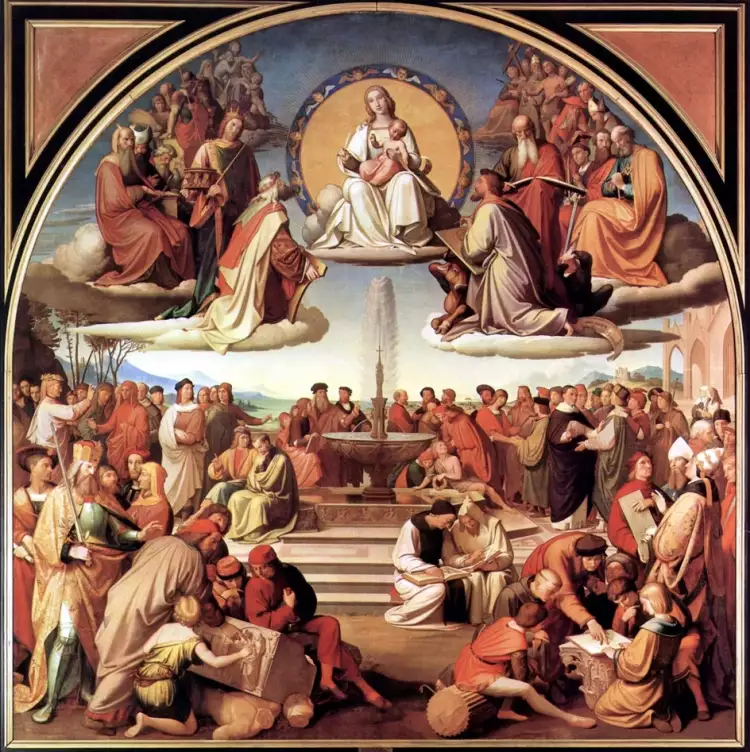 Nazarenes. Johann Friedrich Overbeck. The Triumph of Religion in the Arts, 1831-1840
Nazarenes. Johann Friedrich Overbeck. The Triumph of Religion in the Arts, 1831-1840
Key Principles of the Nazarenes
In contrast to neoclassical artists who turned to antiquity, the Nazarenes saw their moral and spiritual ideal in the patriarchal Middle Ages. They aimed to lead a deeply moral life, combining creativity with contemplation and prayer. Here are the main ideas of the Brotherhood of St. Luke:
- The Nazarenes saw three paths of artistic development: imitation of nature, the ideal, and imagination. The first path embodied Dürer, the second Raphael, and the third Michelangelo. These directions needed to be reconciled and harmonized.
- Due to religious convictions, the painters refused to study anatomy from deceased bodies and rarely employed nude models. A rare exception was the modest Vittoria Caldoni.
- Representatives of the Brotherhood preferred to work in cells rather than paint from life. They aimed to depict their feelings rather than nature. Sometimes, they posed for each other to work on intricate draperies.
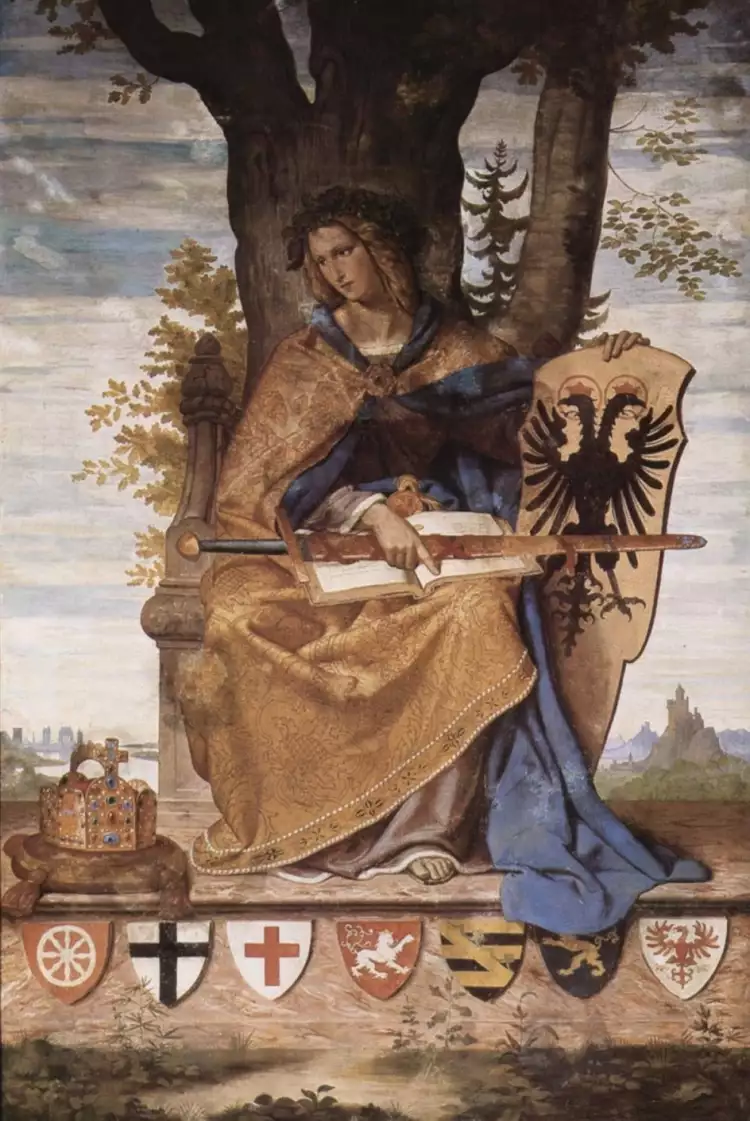 Nazarenes. Philipp Veit. Allegory of Germany, 1836
Nazarenes. Philipp Veit. Allegory of Germany, 1836
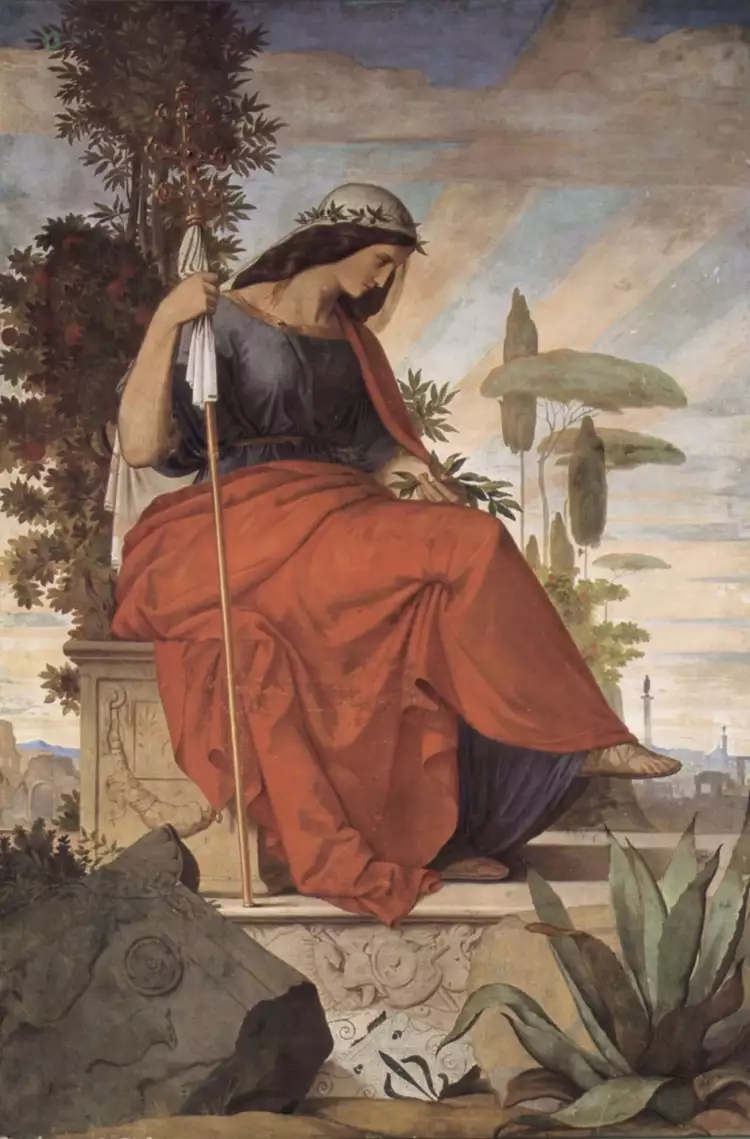 Nazarenes. Philipp Veit. Allegory of Italy, 1834-1836
Nazarenes. Philipp Veit. Allegory of Italy, 1834-1836
The Most Famous Paintings and Frescoes of the Nazarenes
The works of this artistic group are characterized by complex composition and the prevalence of drawing over color. Although the artists opposed themselves to classicists, they retained many academic principles, including conventional color and imitation of the best masters of the past. Here are the most famous paintings of the Nazarenes:
- Frescoes in the house of the Prussian consul Bartholdi (1816-1817). The cycle is dedicated to the life of Joseph from the Old Testament. The Nazarenes created it collaboratively, but the works of Cornelius and Overbeck are particularly interesting.
- Frescoes in the villa of Marquis Carlo Massimo (1819-1830). The subjects for this cycle were inspired by the works of Dante Alighieri, Francesco Petrarca, and other authors.
- "Italy and Germany" by Friedrich Overbeck (1811-1828). This is an allegory of the friendship between the two countries and the aspiration to unite the best features of Italian and German painting.
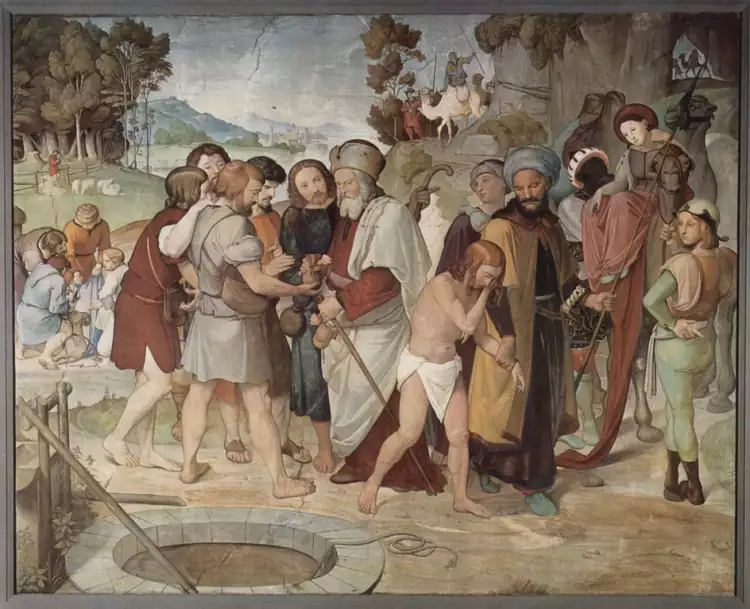 Nazarenes. Johann Friedrich Overbeck. Joseph sold by his brothers, 1817
Nazarenes. Johann Friedrich Overbeck. Joseph sold by his brothers, 1817
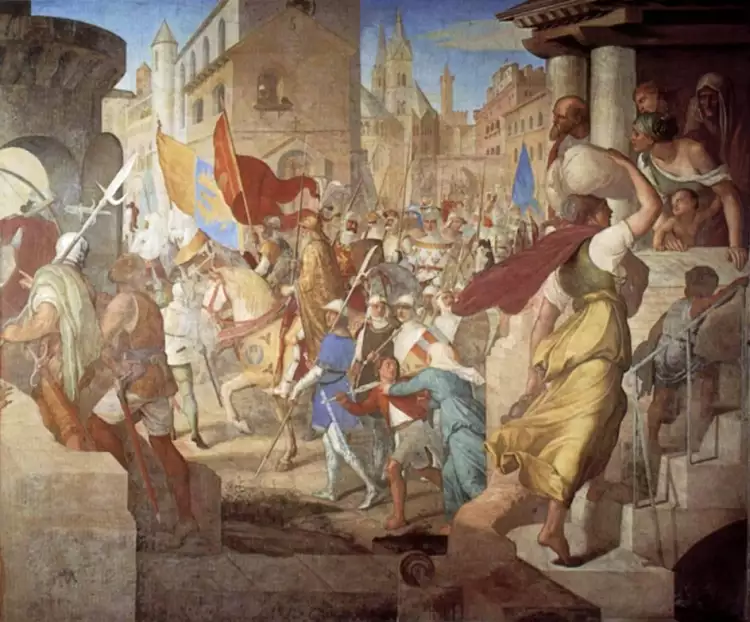 Nazarenes. Julius Schnorr von Carolsfeld. The army of the Franks under Charlemagne in Paris, 1827
Nazarenes. Julius Schnorr von Carolsfeld. The army of the Franks under Charlemagne in Paris, 1827
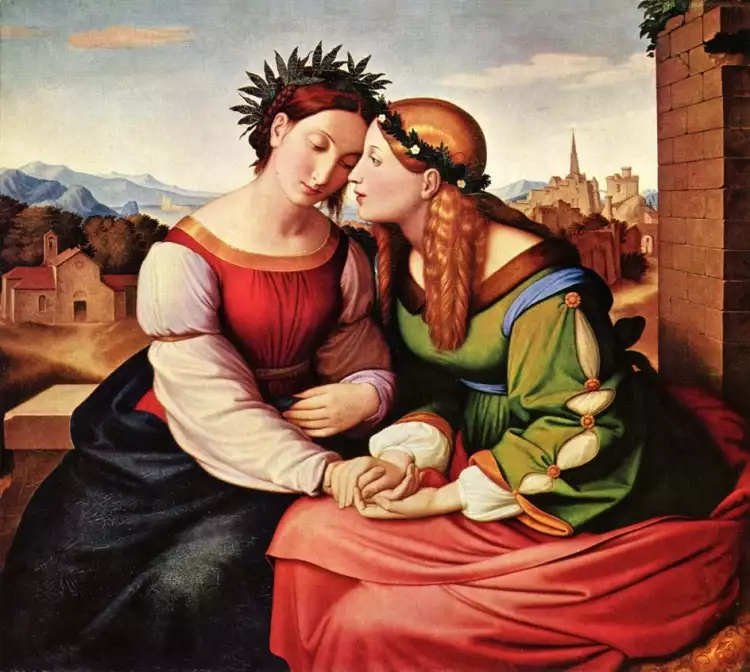 Nazarenes. Johann Friedrich Overbeck. Italy and Germany, 1811-1828
Nazarenes. Johann Friedrich Overbeck. Italy and Germany, 1811-1828
The paintings of the Nazarenes left a significant mark on European culture. Acquiring one of their works for your collection is a great fortune, and it might just smile upon you. The Very Important Lot website provides an opportunity to participate in auctions where unique works of art and antique masterpieces are exhibited.
 Empire: Expensive, Luxuriously, Militantly
Empire: Expensive, Luxuriously, Militantly  Albert Figdor Collection: Sweets for the ladies. Cigars for the gentlemen
Albert Figdor Collection: Sweets for the ladies. Cigars for the gentlemen 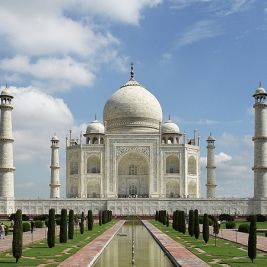 Architecture is an ancient art of creating magnificent monumental masterpieces
Architecture is an ancient art of creating magnificent monumental masterpieces  Animalism is a popular genre in painting from prehistoric times
Animalism is a popular genre in painting from prehistoric times  László Moholy-Nagy was a brilliant artist, a great experimenter, and an outstanding art theorist
László Moholy-Nagy was a brilliant artist, a great experimenter, and an outstanding art theorist 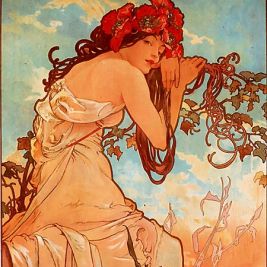 Art Nouveau is an international style in the visual arts
Art Nouveau is an international style in the visual arts 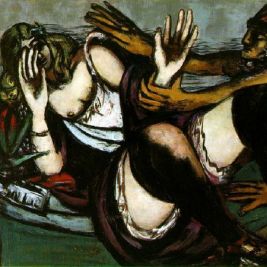 Expressionism - a shocking emotional movement in 20th-century art
Expressionism - a shocking emotional movement in 20th-century art  Academism is an authoritative, virtuoso, and conservative style
Academism is an authoritative, virtuoso, and conservative style 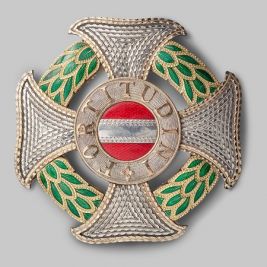 The Military Order of Maria Theresa is the most important officer's award in Austria
The Military Order of Maria Theresa is the most important officer's award in Austria 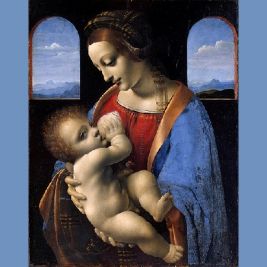 Renaissance is an era of great names
Renaissance is an era of great names